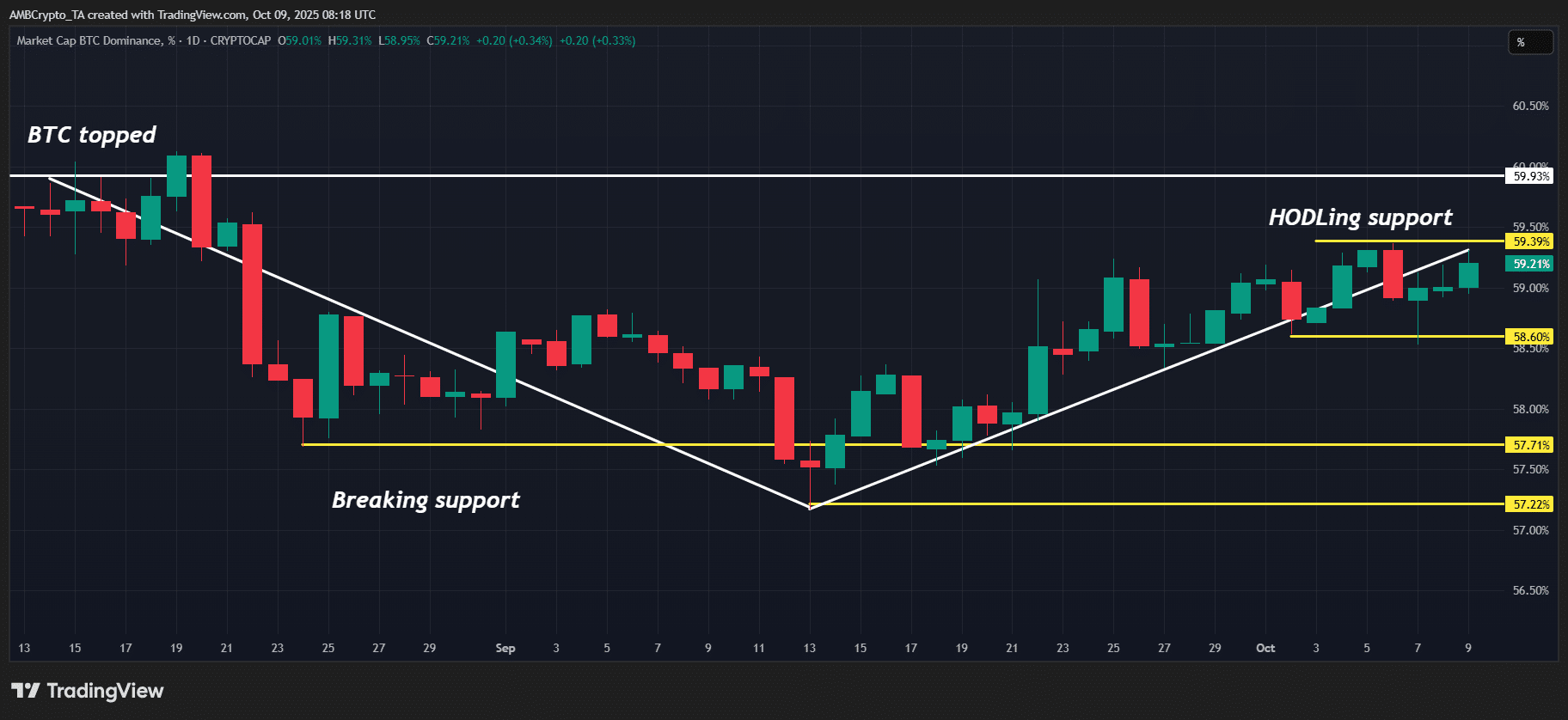Bitcoin is not conclusively at a cycle top; on-chain metrics show controlled profit-taking and strong HODLer conviction while ETF inflows and BTC dominance remain supportive, indicating this 2.4% pullback is likely a bullish reset rather than a capitulation.
-
Profit-taking is muted vs past peaks — holders remain largely patient.
-
Open Interest fell ~$5 billion, clearing overexposed longs and reducing short-term risk.
-
BTC dominance and $440M in ETF inflows signal continued institutional demand.
Meta description: Bitcoin cycle top: On-chain signals and ETF inflows suggest a bullish reset, not a capitulation — learn the key indicators now.
Is Bitcoin nearing a cycle top?
Bitcoin cycle top indicators show divergence: profit-taking is roughly 50% below prior peaks and long-term holder selling is muted, while BTC dominance and institutional ETF flows remain supportive. These mixed signals point to a short-term reset rather than a confirmed cycle top.
What on-chain metrics explain the latest dip?
Open Interest (OI) dropped nearly $5 billion from its $94 billion high, with about $200 million in long liquidations. This contraction often precedes healthy market resets by removing crowded long exposure. Net realized profits over 30 days reached 0.26M BTC (~$30B), well below July and late-2024 peaks.
How are holders behaving compared with past cycle tops?
Holder selling is subdued. Net realized profits and long-term holder (LTH) spending are materially lower than previous peaks. BTC held >10 years moved in the last 30 days totals ~5k BTC, below March/December 2024 peaks and 29% under May 2025 highs. This contrasts with historical tops where LTH spending spikes.
Source: CryptoQuant

Why does BTC dominance matter now?
BTC dominance (BTC.D) is holding near 59%, up ~1% amid the pullback. When dominance holds, capital is concentrated in BTC rather than rotating into high-beta altcoins — a sign institutions and spot ETF flows still favor Bitcoin. On October 8, $440 million flowed into BTC ETFs, tightening supply and supporting price.
Source: TradingView (BTC.D)

When is a pullback a bullish reset versus a top?
A pullback often qualifies as a bullish reset when:
- Profit-taking is controlled and below historical topping levels.
- Long-term holders remain largely inert (low LTH spending).
- Institutional flows (e.g., ETFs) persist and BTC dominance holds.
The current 2.4% retracement off a $125k high aligns with these conditions: OI reduction, muted LTH selling, and continued ETF demand.
Frequently Asked Questions
Is the current Bitcoin pullback a sign of long-term weakness?
The pullback appears short-term and technical: measured profit-taking, a ~$5B OI decline, low LTH selling, and ongoing ETF demand point to consolidation rather than a structural reversal.
What key indicators should traders watch next?
Watch Open Interest trends, long-term holder spending, BTC dominance, and daily ETF inflows. A sustained drop in BTC.D or a surge in LTH sales would increase the likelihood of a real top.
Key Takeaways
- Muted profit-taking: Realized profits and LTH spending remain well below prior cycle peaks, suggesting limited distribution.
- OI reset: A near $5B drop in Open Interest cleared leverage and reduced immediate downside risk.
- Institutional support: BTC dominance and continued ETF inflows ($440M on Oct 8) tighten supply and favor further upside.
Conclusion
On-chain signals, HODLer behavior and institutional spot flows together imply the recent 2.4% pullback is more likely a healthy reset than a definitive Bitcoin cycle top. Market participants should monitor OI, LTH spending and BTC dominance for confirmation, while maintaining disciplined risk management. COINOTAG will continue tracking these indicators and updating readers as conditions evolve.
